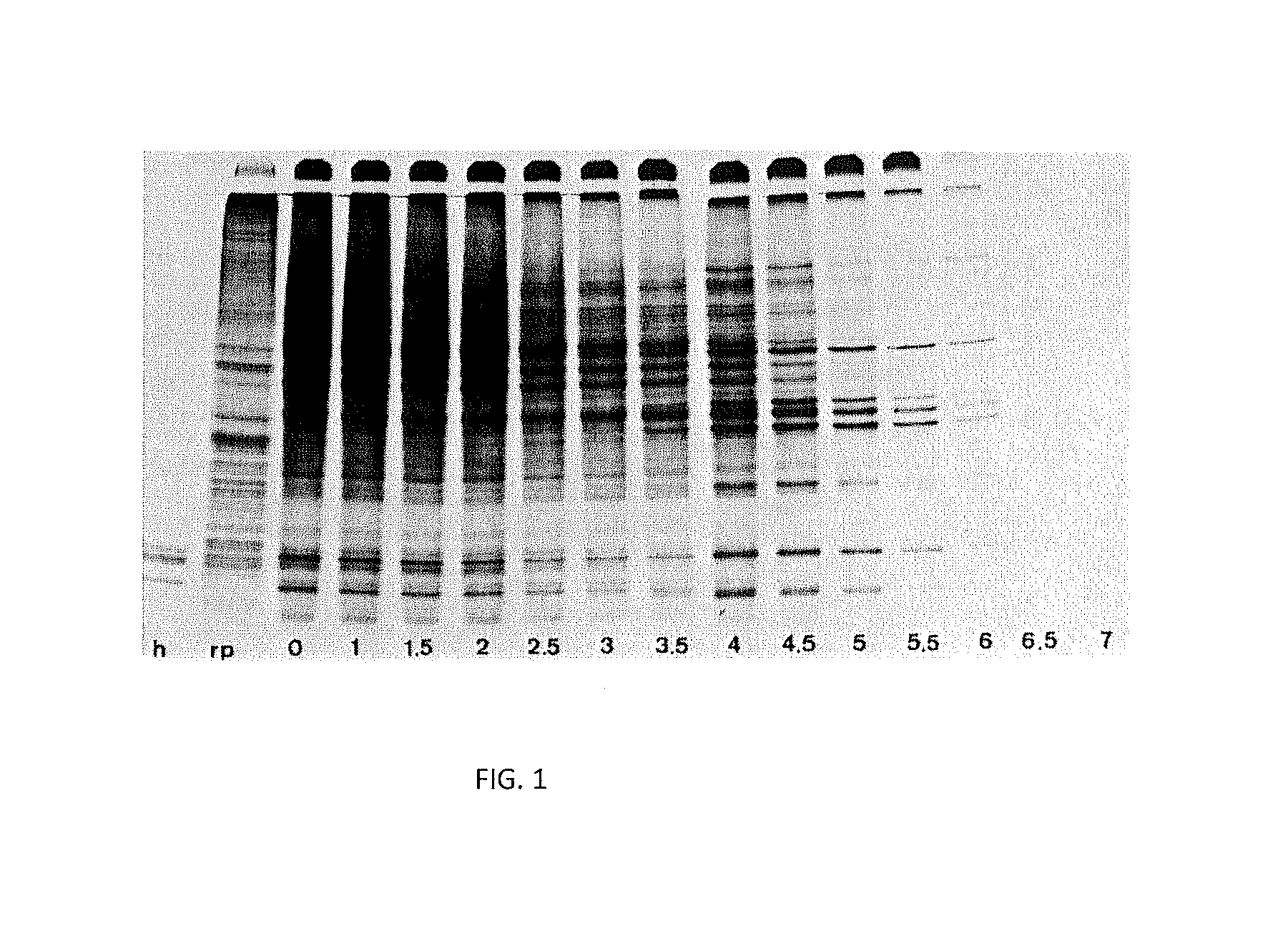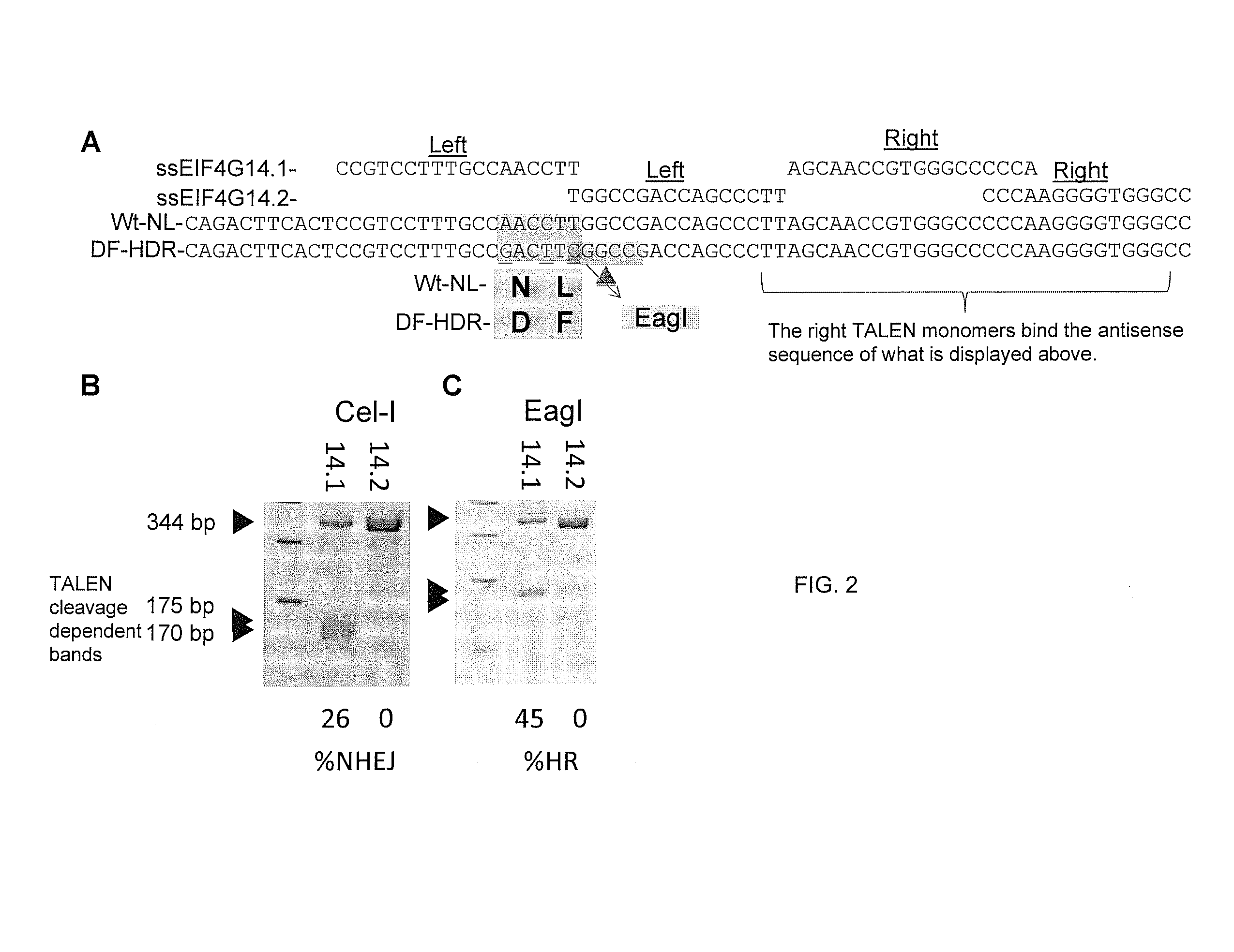Production of fmdv-resistant livestock by allele substitution
a technology of allele substitution and livestock, applied in the field of genetically modified animals, can solve the problems of poor feces, lameness and appetite loss, pain in blisters, and inability to produce fmdv-resistant livestock, and achieve the effects of reducing the number of feces
- Summary
- Abstract
- Description
- Claims
- Application Information
AI Technical Summary
Benefits of technology
Problems solved by technology
Method used
Image
Examples
example 1
[0129]Referring to FIG. 2, a portion of porcine EIF4GI is shown in panel A. The wild type sequence has asparagine and leucine residues in the minus 3 and 2 positions relative to the Lpro cleavage site (arrowhead). In this example, the HDR template replaces the minus 3 and 2 residues with aspartic acid and phenylalanine to render the modified EIF4GI resistant to Lpro cleavage. Two pairs of TALENs (top) were designed to cut the wild type EIF4GI to stimulate homologous recombination. Panel B: Surveyor (Cel-I) assay of pig fibroblasts transfected with each TALEN pair. Panel C: RFLP assay to determine the efficiency of homologous recombination.
[0130]Transfections were performed in early passage (<2 passages) primary pig fibroblasts. Fibroblasts at 70-90% confluence were harvested by for use in transfections. Two micrograms of TALEN mRNA ssEIF4G14.1 or ssEIF4G14.2 along with 0.2 nMole of a 90-mer homologous oligonucleotide (5′-cccagacttcactccgtcctttgccgacttcggccgaccagcccttagcaaccgtgggcccc...
example 2
[0132]For colony isolation, cells will be enumerated and plated at a range of densities 1-20 cells / cm2 on 10 cm dishes. Cells will be cultured for 10-15 days until individual colonies of 3-4 mm in diameter are present. Individual colonies are aspirated with a p-200 pipettor under gentle aspiration and expelled into a well of 24-well plate with 500 μl of growth medium (Carlson, Garbe et al. 2011). Plates with clearly defined colonies (˜10-30 / plate) will be chosen for colony aspiration to limit the chance of aspirating cells from multiple colonies. Once a colony reaches 70-90 percent confluent in the 24-well dish, a portion will be harvested for RFPL analysis and the remainder will be cryopreserved. Cells will be taken from colonies that have been determined to have successfully acquired the intended features and used for cloning to make founder animals.
[0133]The specific embodiments above are intended to be illustrative and not limiting. Additional embodiments are within the broad co...
PUM
| Property | Measurement | Unit |
|---|---|---|
| volume | aaaaa | aaaaa |
| diameter | aaaaa | aaaaa |
| time | aaaaa | aaaaa |
Abstract
Description
Claims
Application Information
 Login to View More
Login to View More - R&D
- Intellectual Property
- Life Sciences
- Materials
- Tech Scout
- Unparalleled Data Quality
- Higher Quality Content
- 60% Fewer Hallucinations
Browse by: Latest US Patents, China's latest patents, Technical Efficacy Thesaurus, Application Domain, Technology Topic, Popular Technical Reports.
© 2025 PatSnap. All rights reserved.Legal|Privacy policy|Modern Slavery Act Transparency Statement|Sitemap|About US| Contact US: help@patsnap.com


